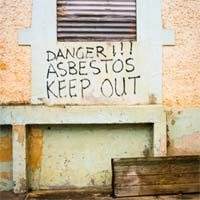Asbestos Bans Influenced by Mesothelioma ‘Visibility’

Why have some countries banned asbestos while others have not? A team of Korean researchers studying the question says it is likely influenced by perception of mesothelioma risk as well as what neighboring countries are doing.
Medical authorities around the world agree that the mineral asbestos is directly linked to development of mesothelioma, a virulent cancer of the linings around organs. Most often found in the pleura encasing the lungs, mesothelioma is usually the result of on-the-job exposure to asbestos dust. Asbestos was once widely used in a variety of construction materials, including wallboard, paint, floor and ceiling tiles and cement blocks. Even in countries where asbestos is now banned, the presence of the material in existing buildings can pose a mesothelioma risk to demolition or renovation crews, as well as building inhabitants.
According to researchers at the School of Public Health in Seoul, South Korea, of the 143 countries that used asbestos between 2003 and 2007, only 44 have now banned the substance. The team found a clear link between the tracking and visibility of mesothelioma in a country and whether or not that country had an asbestos ban in place. Countries with “more clearly-defined health-related infrastructures” kept better track of mesothelioma mortality, making the problem more visible to the public. Countries without mesothelioma databases were much less likely to have banned asbestos.
The Korean team found that another big influence on a country’s asbestos policy was the policy in surrounding countries. “Asbestos ban policy from adjacent countries might have facilitated the adoption of alternative solutions,” observe the researchers. In Europe, asbestos bans tended to “spread” from Nordic countries toward the West.
Meanwhile, the countries that make up the United Nations’ Rotterdam Convention Conference failed to put asbestos on a global list of hazardous substances. Seven countries including Russia, Zimbabwe, Kazakhstan, India, Kyrgyzstan, Vietnam and Ukraine opposed adding asbestos to the list which would have made it more difficult to ship. Most surprising of all, the U.S. still does not have a comprehensive asbestos ban in place.
The World Health Organization estimates that 90,000 annual mesothelioma deaths are directly attributable to asbestos exposure.
Sources:
Bahk, J et al, “Why some, but not all, countries have banned asbestos”, 2013, International Journal of Occupational and Environmental Health, pp. 127-135.





